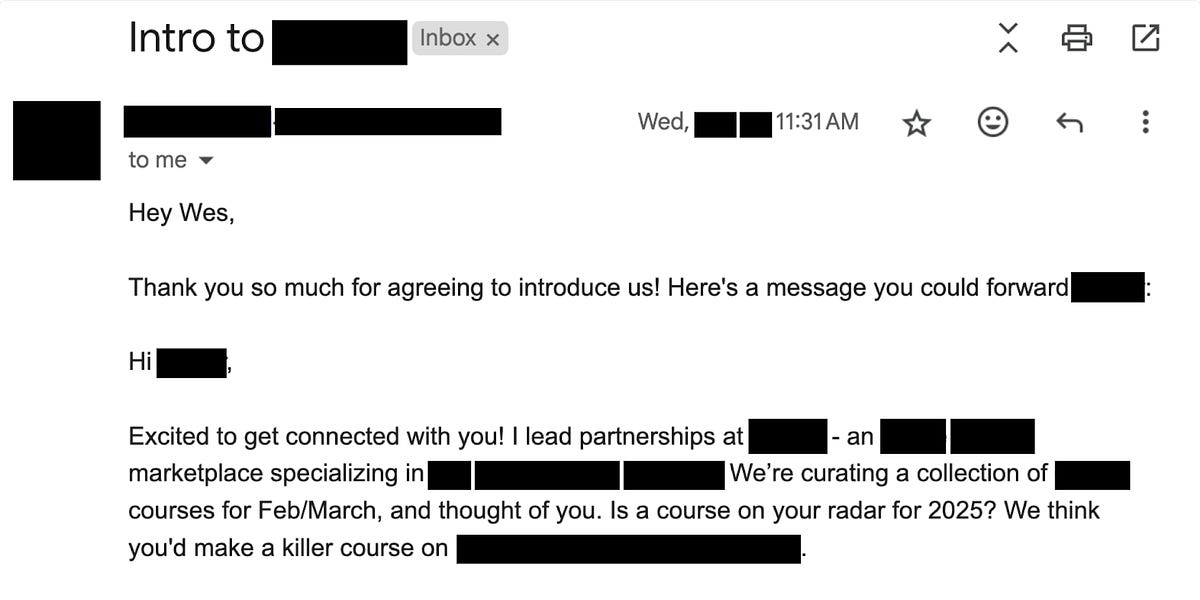
Your note sucks because you don't sound sincere. Do these 6 things to make your note more persuasive before you hit send.

Your note sucks because you don't sound sincere. Do these 6 things to make your note more persuasive before you hit send.

An in-depth breakdown of charismatic leadership tactics and how to tap into your own charisma when speaking in public.

Rachel Botsman, Oxford University professor and author of the new Pushkin audiobook How to Trust and Be Trusted, joins Malcolm to talk about how to make smart decisions about trust. Then, a preview of How to Trust and Be Trusted, which is available on Audible or wherever you get your audiobooks.

There’s a right and wrong way to proceed. Here’s how to increase the chances your leader listens and takes action--while reducing the chance they feel threatened.
/https://tf-cmsv2-smithsonianmag-media.s3.amazonaws.com/filer_public/b1/ca/b1caa6be-175b-4479-8abf-7c648eeeeca5/dhnwxp.jpg)
The terms “snake oil” and “snake-oil salesperson” are part of the vernacular thanks to Clark Stanley, a quack doctor who marketed a product for joint pain in the late 19th century

Forty years ago, Bob Cialdini published a groundbreaking book on the power of influence. In our digital age, these rules may have become even more powerful.

Forty years ago, Bob Cialdini published a groundbreaking book on the power of influence. In our digital age, these rules may have become even more powerful.

When there is an opportunity to gain a positive reputation, individuals are more willing to sacrifice their immediate self-interest. Partner choice creates opportunities for competitive altruism, i.e. individuals compete to be regarded as more generous ...

Social scientists are uncovering the intricate group dynamics of gossip

Powerholders make decisions that impact not only their own situation, but also the outcomes of those who depend on them. The implications of being in …

The internet makes most information instantly available. What if that’s why mass culture is so boring?

"Storytelling is one of the most powerful marketing and leadership tools there is," says communications expert Kelly D. Parker. She explains how stories make proposals of all kinds more memorable — and shows how you can craft a compelling narrative to connect, persuade and drive meaningful action.

If you are looking for The Dictator's Handbook, this post provides you a summary, overview and criticism of one of the best works of political analysis

Detailed notes and summary for The Laws of Human Nature by Robert Greene. Another in-depth book with timeless principles to better understand and navigate life.

Visit http://TED.com to get our entire library of TED Talks, transcripts, translations, personalized talk recommendations and more. Simon Sinek presents a simple but powerful model for how leaders inspire action, starting with a golden circle and the question "Why?" His examples include Apple, Martin Luther King, and the Wright brothers -- and as a counterpoint Tivo, which (until a recent court victory that tripled its stock price) appeared to be struggling. The TED Talks channel features the best talks and performances from the TED Conference, where the world's leading thinkers and doers give the talk of their lives in 18 minutes (or less). Look for talks on Technology, Entertainment and Design -- plus science, business, global issues, the arts and more. You're welcome to link to or embed these videos, forward them to others and share these ideas with people you know. Follow TED on Twitter: http://twitter.com/TEDTalks Like TED on Facebook: http://facebook.com/TED Subscribe to our channel: http://youtube.com/TED TED's videos may be used for non-commercial purposes under a Creative Commons License, Attribution–Non Commercial–No Derivatives (or the CC BY – NC – ND 4.0 International) and in accordance with our TED Talks Usage Policy (https://www.ted.com/about/our-organization/our-policies-terms/ted-talks-usage-policy). For more information on using TED for commercial purposes (e.g. employee learning, in a film or online course), please submit a Media Request at https://media-requests.ted.com

The most effective persuasion happens when we persuade ourselves. The purpose of the memo or the table or the graph or the presentation is to create the conditions for someone to make up their own …

The social contract of trust between experts and society is in danger of dissolving. We need to start putting it back together.

East Asian businesses often go out drinking.

Every startup leader should practice flexing their storytelling muscles. To help warm these muscles up, we’ve rounded up some of our best advice about storytelling in business that’s been featured in the Review.

Sophists like Protagoras used the rhetoric of antilogic to escape from the illusion of truth and make room for uncertainty

What I learned after embarking on a week-long experiment using Charles Duhigg’s zippy psychology cum self-help book Supercommunicators to improve my conversational skills

A nearly 50-year-old Harvard University study found that the word "because" helps people make more persuasive requests. Here's why, says a Wharton professor.

How are so many politicians today able to get away with overtly racist utterances? By using rhetorical ‘figleaves’

Discover the power of examples in shaping our lives. Explore quotes on example and how they inspire us to reach new heights.

Back in December, we wrote about Appin. We were not writing about the reports (of which there have been many) that the organization that started as a sort of cybersecurity training school, but morp…

Here's how to give a eulogy, and other difficult speeches, according to a Stanford business school lecturer.
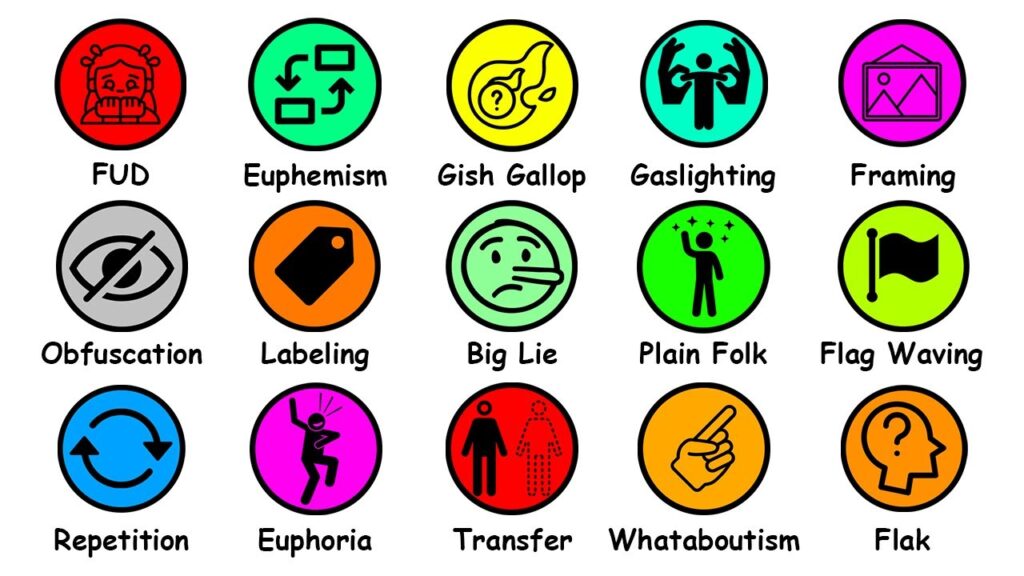
The concept of propaganda has a great deal of power to fascinate. So does the very word propaganda, which to most of us today sounds faintly exotic, as if it referred mainly to phenomena from distant places and times.
The word “friends” has at least five different meanings: Allies Backstage intimates Fun friends Mutual interests friends Soc...
A theme in my practice is the leader who's seeking to increase employee motivation. In this context it's important to bear in mind the work of Frederick Herzberg, a 20th century psychologist who had a profound influence on our understanding...

Persuasive rhetorical techniques from the speeches of Demosthenes in Classical Athens to Cicero in the Late Roman Republic.

Have a great idea but sure how to sell it? Investor and teacher Mar Hershenson has you covered. Whether it's sharing a new product with a client or vying for a promotion, these three steps will help you tell an irresistible story and get the "yes" you're looking for.

When you have to communicate a difficult organizational decision to employees, it’s hard to know how much information to provide when you can’t be fully transparent yet. Saying nothing can undermine people’s trust in your motives and compassion, whereas saying too much can leave people feeling overwhelmed and vulnerable as they struggle to process the information and implications. Striking the right balance between these two extremes is a tricky exercise for leaders. The author presents five strategies to help you figure out what to say and do when you can’t yet be fully transparent with your employees.

Even the most effective leaders recognize how much is outside of their control, but one thing we all have agency over is how we communicate with others. Clearly articulated requests, the kinds that elicit real responses, don’t come naturally to most of us. As it turns out, there’s an art to the request — whether it’s directed at an employee who’s producing subpar deliverables or a colleague from a different department who hasn’t been pulling their weight on a collaborative project. Here’s why requests are so hard to make, what so many leaders are still getting wrong, and a handful of strategies for issuing requests that elicit concrete, actionable responses.
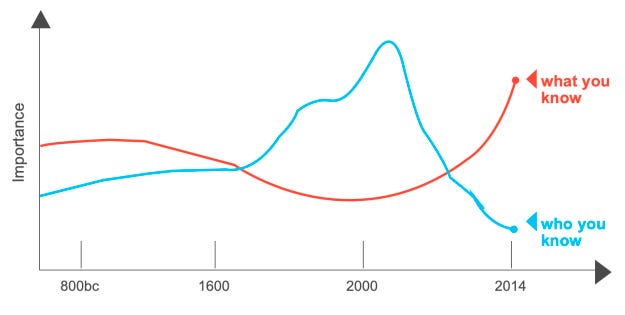
What-You-Knows are now more important than Who-You-Knows
:extract_focal()/https%3A%2F%2Fhbr.org%2Fresources%2Fimages%2Farticle_assets%2F2020%2F07%2FJul20_30_982459672.jpg)
How do you convince someone who, for one reason or another, doesn’t see eye-to-eye with you?

How our culture, politics and technology became infused with a mysterious social phenomenon that everyone can feel but nobody can explain.

Lab-based research shows that adults can be convinced, over the course of a few hours, that as teens they perpetrated crimes that never actually occurred.

Internal company documents reveal how the imageboard’s chaotic moderation allowed racism and violence to take over.

3 tips for coaching people, from a former military psychologist

Plex has free movies and TV shows available with no sign up required.

Negotiation is tough. While no words work all the time, the following phrases can help keep you on track and serve notice to the other side.

New research suggests that body postures can reveal our emotions to other people—and maybe even change how we feel inside.

When trying to make language either more concrete or more abstract, one helpful approach is to focus on either the how or the why.

Industrial genius Carl Braun believed that clear thinking and clear communication go hand in hand. Here the guide on writing productively to get things done.

Two concepts can help explain why society seems increasingly unable to agree on basic facts.

Technological advances in natural language processing, computational linguistics, and machine learning, combined with the digitization of everything from cover letters to conversations, have revolutionized our ability to analyze language, yielding unprecedented insights. Think of it as a new science of language. Many of the findings suggest that small changes in the words we use can increase our ability to persuade and influence others.

Following a simple, three-part framework can make your introductions smoother, easier, and more memorable.
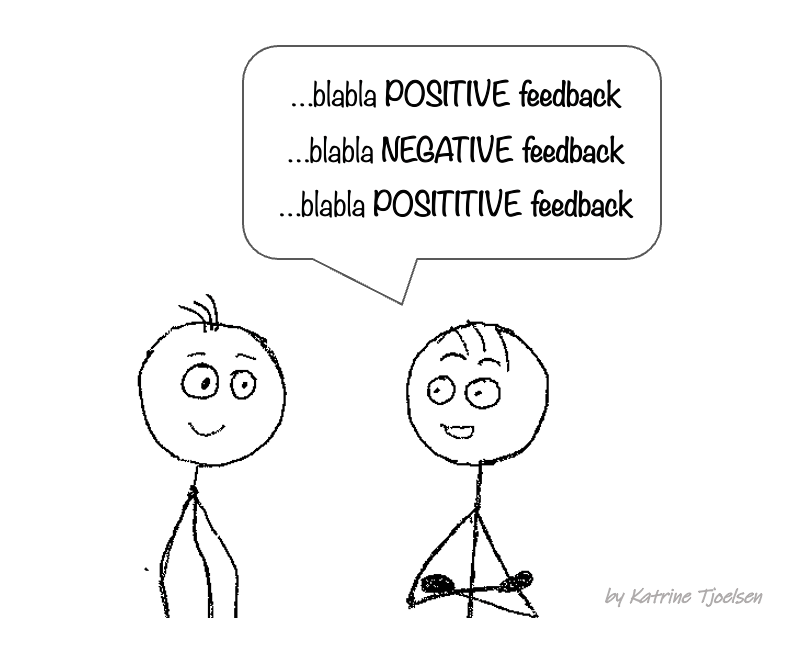
Most managers suck at giving feedback — it’s too infrequent and not actionable enough.

Bonhoeffer's "theory of stupidity" posits that we have more to fear from stupidity than evil. The latter is easier to defeat than the former.

In 2002 I was driving to a hedge fund manager's house to hopefully raise money from him. I was two hours late. This was pre-GPS and I had no cell phone. I was totally lost. I kept playing over and over again "Lose Yourself" by Eminem. I was afraid this was my one shot and I was blowing it. I was even crying in my car. I was going broke and I felt this was my one chance. What a loser.

Improv comedy is about more than making people laugh. It can help performers be more creative and self-assured — and combat anxiety, both on and off stage.

Transformational leaders are exceptional communicators. In this piece, the author outlines four communication strategies to help motivate and inspire your team: 1) Use short words to talk about hard things. 2) Choose sticky metaphors to reinforce key concepts. 3) Humanize data to create value. 4). Make mission your mantra to align teams.

Talking to someone who gets defensive can be frustrating. So, what can you do? Here's how to sidestep someone's personal fortifications.

By exposing people to small doses of misinformation and encouraging them to develop resistance strategies, "prebunking" can fight fake news.

When people argue, a kind of frustration called persuasion fatigue can cloud their judgment and harm relationships

Examples of hidden ways people drain one other’s energy in social interaction—and what to do about it

Arguing well isn’t just about winning. A philosophical approach will help you and the other person get much more out of it

When you join a new organization, it’s important to understand who holds the power because they directly impact how work gets done, but it’s not always perfectly clear. In this piece, the author offers strategies to better identify where the true power exists. “At first glance across your company, it’s natural to assume that those who have ‘chief’ or ‘senior’ in their titles are the ones that dominate the power landscape,” the author writes. “But this isn’t always the case.”

As someone who researches American religion, I find myself in impassioned conversations quite often. Religion is a beautiful element that…

The pandemic and other stressful events over the past few years have only made empathic communications even more desirable and necessary, especially as those expressions have become more virtual — including videos, social media posts, and emails. But just as each of us has varying levels of empathy, not every leader is equally empathic. So is a lack of natural empathy a showstopper when it comes to expressing and benefitting from empathic communications? No. The good news is that all leaders (even those who are not naturally empathic) can communicate messages of empathy as powerfully as they convey messages of unity and accountability. During challenging times, the most effective leadership communications are ones that deliver attention, acknowledge distress, demonstrate care, and — not necessarily at first, but eventually — take appropriate action to mitigate the situation or at least provide comfort. This article offers four touchpoints to focus on in your communications.

Today, Zapier automates work by connecting with over 5,000 apps. The company has been profitable since 2014 and is valued at $5B – with 700 employees working remotely. Wade, Zapier CEO, shared his learnings growing into the role of a growth-stage CEO.

One of my pastimes is listening to interviews with accused corporate fraudsters before and after they got caught.

Amid COVID, studies in Denmark suggest that crowds do not always engage in bad behavior—and that mass-gatherings sometimes offer meaningful connection

Sometimes facts, logic, and reasoning aren't enough. Here's how the most persuasive people make a great argument even more convincing.

Free Online Guide - What drives online purchases? And how can you apply this information to boost conversions?

Have you ever wondered about internal organization dynamics and why some groups of people (who aren’t on the same team) are more successful than others? Why different “tribes” inside the organization seem to be at war with one another lowering performance in increasing politics? Why certain groups of people never seem to do anything? Or why …

The Primary Tactics Used to Influence Others —The number one thing to understand about influence is that people make decisions for their reasons, not yours.

There are lots of techniques for becoming more persuasive , but perhaps the simplest, most practical technique is the But You Are Free me

How do you sell shoppers on duck, a product that’s served in many restaurants but that many people do not feel comfortable cooking at home?

Former Google SVP of Products Jonathan Rosenberg on the quintessential lessons every leader needs to learn.

Russ Laraway wades through all of the competing opinions, complex frameworks and advice out there on how to be a better manager, creating a simple, data-backed leadership toolkit.

Summary of Nudge, presented to IxDA LA - Download as a PDF or view online for free
Powerful communicators employ these persuasion techniques when designing online experiences that convert visitors into leads and sales.

Owen Edwards on the most effective eight words he's ever read.
U.S. Army Engineer School Commandant’s Reading List
How to minimize the drama and keep your team on track.
76 votes, 15 comments. Some context: At marketing meetups, we've always heard people namedropping Dr. Robert Cialdini's 6 Principles Of Influence…

I’ve found the following to be common (and not easily taught) in people whose product skills I admire.

John Farrell took his team from the bottom of their division last year to the 2013 World Series with a set of tactics every manager should learn.
:extract_focal()/https%3A%2F%2Fs3.amazonaws.com%2Fpocket-syndicated-images%2Farticles%2F1733%2F1569602069_Screenshot_2019-09-2721st-centurypropagandaAguidetointerpretingandconfrontingthedarkartsofpersuasion.png)
In the West, “rational propaganda” has become the primary form of political discourse.

“I’ve probably revised this investor pitch deck 200 times,” a founder told me recently. She’d met with more than 50 potential investors before closing a seed round last month. This might sound excessive to some, but her experience is not unusual. Entrepreneurs often spend hundreds of hours raising funds from angel and venture capital investors. While these activities are clearly important, analysis of new data on startups suggests that founders should also dedicate significant time to something that many people overlook: recruiting great mentors. This simple strategy can increase a company’s odds of success more than almost anything else.

When people discover that they don’t know as much as they thought they did, something interesting happens: their political attitudes become less extreme.
Good body language is a crucial part of making an excellent first impression.
Awesome List of resources on leading people and being a manager. Geared toward tech, but potentially useful to anyone. - LappleApple/awesome-leading-and-managing

The home of Process Excellence covers topics from Business Process Management (BPM) to Robotic Process Automation (RPA), AI, Lean Six Sigma and more. Latest news, freshest insight and upcoming events and webinars.

Apple is famous for not engaging in the focus-grouping that defines most business product and marketing strategy. Which is partly why Apples products and advertising are so insanely great. They have the courage of their own convictions, instead of the opinions of everyone else’s whims. On the subject, Steve Jobs loves to quote Henry Ford […]
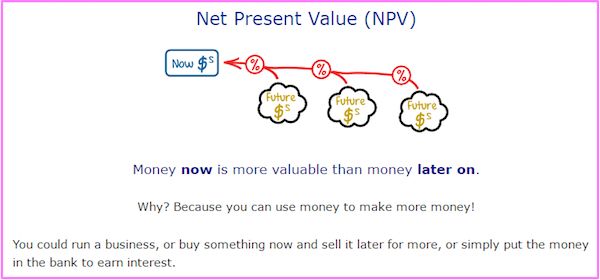
Here are 14 persuasive writing techniques that will make your website appeal to visitors and increase your conversion rates.
Leadership Now is a leading source for leadership development and analysis. We believe that anyone can make a difference by leading from where they are.

"The success of your startup is determined before you ship a single line of code." Okay, you’re right, Sun Tzu, the ancient Chinese war general and author

We all know that leaders need vision and energy, but after an exhaustive review of the most influential theories on leadership–as well as workshops with thousands of leaders and aspiring leaders–the authors learned that great leaders also share four unexpected qualities. The first quality of exceptional leaders is that they selectively reveal their weaknesses (weaknesses, not fatal flaws). Doing so lets employees see that they are approachable. It builds an atmosphere of trust and helps galvanize commitment. The second quality of inspirational leaders is their heavy reliance on intuition to gauge the appropriate timing and course of their actions. Such leaders are good “situation sensors”–they can sense what’s going on without having things spelled out for them. Managing employees with “tough empathy” is the third quality of exceptional leadership. Tough empathy means giving people what they need, not what they want. Leaders must empathize passionately and realistically with employees, care intensely about the work they do, and be straightforward with them. The fourth quality of top-notch leaders is that they capitalize on their differences. They use what’s unique about themselves to create a social distance and to signal separateness, which in turn motivates employees to perform better. All four qualities are necessary for inspirational leadership, but they cannot be used mechanically; they must be mixed and matched to meet the demands of particular situations. Most important, however, is that the qualities encourage authenticity among leaders. To be a true leader, the authors advise, “Be yourself–more–with skill.”

New research indicates that consumers are catching on and may be annoyed by certain nudges, potentially limiting their effectiveness.

Your product can’t suck. That’s a given. But it’s also not enough to be a good product that doesn’t hook your customer and connect to their pain points.
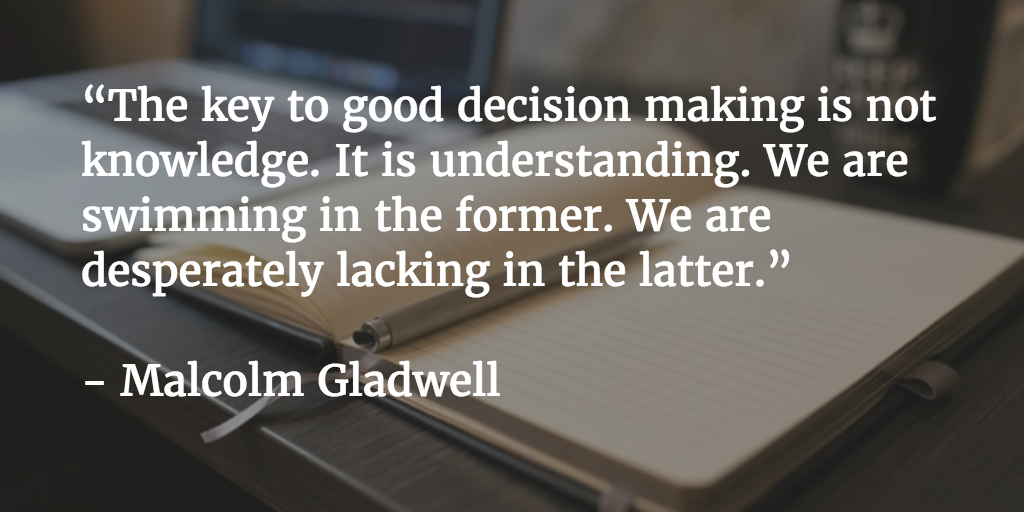
The Tipping Point summary shows you why ideas spread like viruses, which 3 kinds of people are responsible for it & why no bad idea will ever spread.
Your #1 resource for digital marketing tips, trends, and strategy to help you build a successful online business.

A company study found that a manager’s technical skills were far less valued by employees than people skills.

“Reality is merely an illusion, albeit a very persistent one.” ~ Albert Einstein It was well past 5pm and we were still at the office debating about how we should inspire our customers. We were debating the strategy to ‘be like Mike‘ or to ‘be like Joe.’ To be like Mike, meant we would only …

Fight the Good Fight The probability that we may fall in the struggle ought not to deter us from the support of a cause we believe to be just. Try Honey Before Vinegar If you would win a man to your cause, first convince him that you are his sincere friend. On the contrary … …

The Primary Tactics Used to Influence Others —The number one thing to understand about influence is that people make decisions for their reasons, not yours.

The job of a good storyteller, marketer, or writer is to pull one over on you. To make you believe what they’re saying, no matter how farfetched it might be.

How do you make decisions? If you're like most people, you'll probably answer that you pride yourself on weighing the pros and cons of a situation carefully and then make a decision based on logic. You know that other people have weak personalities and are easily swayed by their emotions, but this rarely happens to you. You've just experienced the [fundamental attribution error](https://en.wikipedia.org/wiki/Fundamental_attribution_error) — the tendency to believe that other people's behaviour is due to their personality (“Josh is late because he's a disorganised person”) whereas our behaviour is due to external circumstances (“I'm late because the directions were useless”). Cognitive biases like these play a significant role in the way we make decisions so it's not surprising that people are now examining these biases **to see how to exploit them in the design of web sites**. I'm going to use the term ‘persuasion architects' to describe designers who knowingly use these techniques to influence the behaviour of users. (Many skilled designers already use some of these psychological techniques intuitively — but they wouldn't be able to articulate why they have made a particular design choice. The difference between these designers and persuasion architects is that persuasion architects use these techniques intentionally).
The subtle signals you have to master.

Use these 7 persuasion tips to instantly make your presentations, roadmaps, marketing and sales materials more compelling, engaging, and influential.

In 2002 I was driving to a hedge fund manager’s house to hopefully raise money from him. I was two hours late. This was pre-GPS and I had no cell phone. I was totally lost. If you’ve never driven around Connecticut you need to know one thing: all the roads are parallel and they […]

Politicians and other public figures deploy particular rhetorical devices to communicate their ideas and to convince people, and it’s time that we all learned how to use them, says speechwriter Sim…

You’re on the most important elevator ride of your life. You have ten seconds to pitch- the classic “elevator pitch”. Love or Hate. Money or Despair. And you may never get this chance again. As PM Dawn says, “I feel for you. I really do.” There are books about this. But don’t waste your time. […]

Follow this guide for everything you need to know about conversion rate optimization, how it works, and how to use it.

The Ten Golden Rules of Leadership explores the classical figures to determine the ten crucial axioms of leadership. Rule 1. Know Theyself. Rule 2 ...
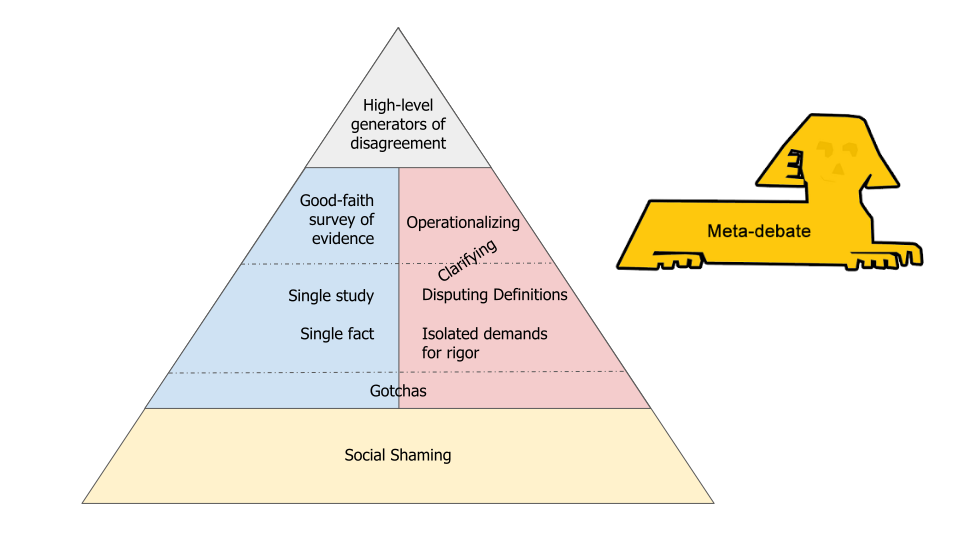
How to turn arguments from vicious battles into productive dialogues.
The American tendency to fill up quiet space is not a good strategy with the Chinese.
Science has some answers about how to deal with difficult people. Here NYT bestselling author Dan Pink breaks down how to make people behave better.

We all get a lot of email. And we send off scores of them, too. For important emails we hope for replies or action. If you do the math on the number of inbound emails you get multiplied by the time…

In the least surprising news of 2016, Yahoo is selling its core business to Verizon for a sad $5 billion. Everyone knew this was coming — but for some reason, the headlines keep blaming Marissa.

Market research can extract plenty of data, but its greatest value is in evoking reactions

Everything you need to know about Howard Suber Of UCLA Film School Explains How To Tell A Story

Restaurants are great test labs for testing neuromarketing techniques. It's easy to change offerings, menus, and pricing, and one gets immediate feedback on what's working and what's not. Today, many eateries are employing sophisticated menu psychology to maximize sales and profits.
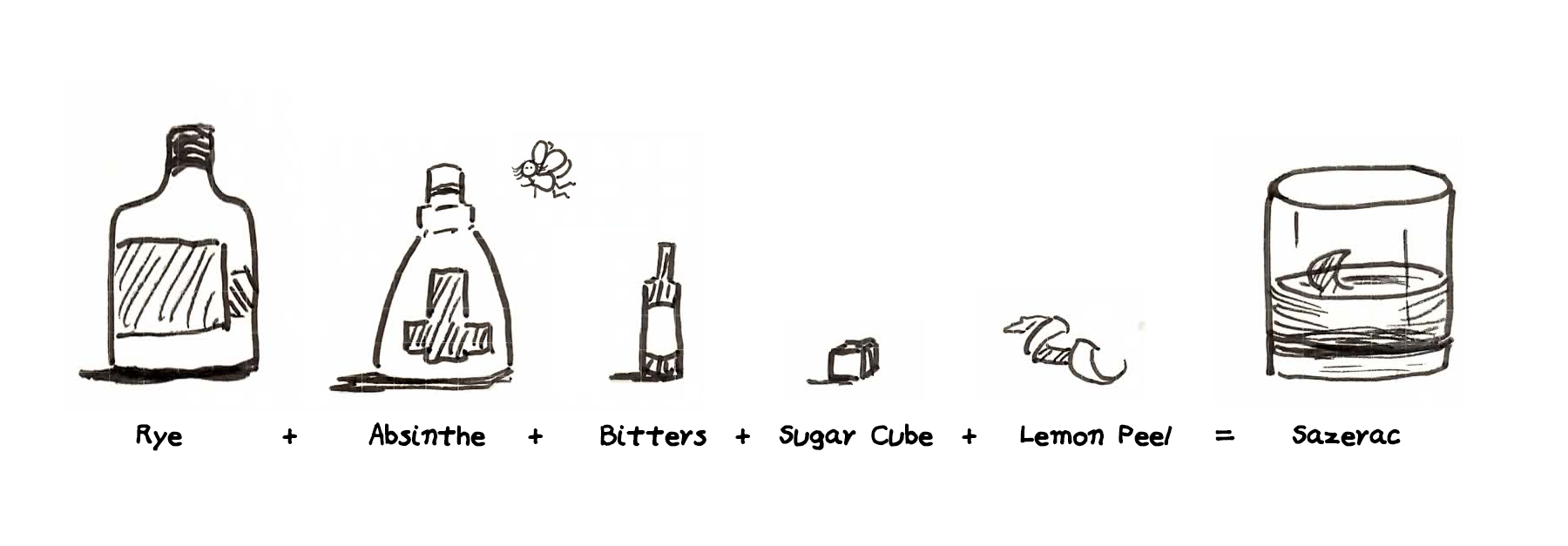
I was enjoying a sazerac with a old friend of mine at a local watering hole. And by watering hole, I mean incredibly hip farm-to-table restaurant full of young techies because we were in Mountain V…
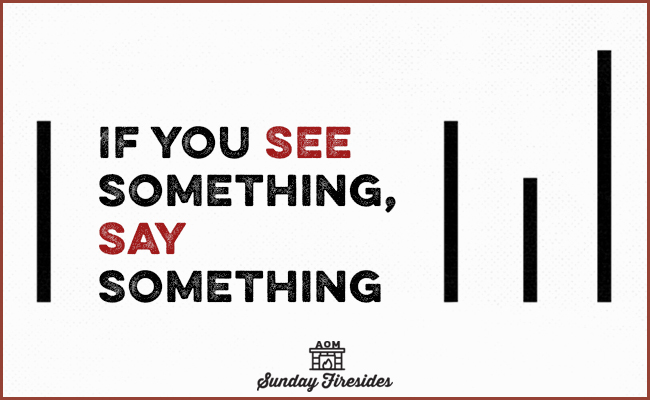
In a classic experiment conducted by the psychologist Solomon Asch, participants were placed in a group, shown a “target” line alongside a set of comparison lines of varying lengths, and asked which was closest in length to the target. The answer was always obvious, but unbeknownst to the study’s actual participants, they had been placed […]
There are words which have special meaning within each culture and carry power where they are used.

How does hostage negotiation get people to change their minds? The Behavioral Change Stairway Model was developed by the FBI’s hostage negotiation unit, and it...

What does it take to become a more convincing communicator? New research suggests that linguistic mirroring — that is, adjusting your communication style to match that of your audience — is an effective tool to increase your ability to influence others. In this piece, the authors describe four key dimensions of linguistic mirroring, as well as several tactical strategies for leaders looking to win over a client, judge, or other important evaluator. Ultimately, they argue that building genuine relationships with key evaluators is the best way to gain insight into their linguistic preferences — but it’s up to all of us to make sure that we use the power of linguistic mirroring for good.

It's possible to get a higher salary without taking anyone captive.

Leadership has traditionally been taught as a set of larger actions, such as having a difficult conversation or coaching someone. In reality, leading well is an integrated activity, in which one is doing many things simultaneously. One way to learn to do this better is to think about leadership as a series of small actions that are practiced, then carefully sequenced and interwoven during interactions. For instance, instead of thinking of something as a “difficult conversation,” a leader might aim to disarm, then show appreciation, then appeal to values. Research identifies 25 such actions, and learning to implement them in the right circumstances can help one become a better leader.

How our toothy modern smile was invented by a confluence of French dentistry and Parisian portrait-painting in the 1780s

You can't force luck. But you can increase your chances (by a lot) to get lucky. Here's how to do it with luck surface area.

Whether you want a raise, different responsibilities, or more resources, knowing how to negotiate is vital. Here are 5 (non-sleazy, promise!) tricks straight from the car lot that will help you get what you want at work.

The advantages of being attractive are exorbitant. Beauty might be the single greatest physical advantage you can have in life. And yet…

This is the legendary presentation about cross-functional teams from Ken Norton that made donuts and product management synonymous.

To engage leaders, colleagues, and clients, use this simple technique

At IHOP and Applebee's, menus are sales documents. And navigational guides. And explainers.

Fuel success by linking a company’s strategic goals to the reasons people are proud to work there.

We may have learned that we need to let people speak without interrupting but taking turns talking does not truly denote listening. And unintentionally hijacking conversations to advise, inject humor, empathize, prioritize efficiency, or insert ourselves into the speaker’s narrative is often done with good intentions, but may instead disrupt the human connection we think we’re forging. Recognizing when to shift out of our habitual styles and consciously apply alternative styles of listening and responding may allow for more effective and meaningful interactions.

UPDATE Several years ago on my 68th birthday I wrote up 68 bits of advice for my adult children, and posted them here. The bits were extremely popular, and they were widely shared by others. I was encouraged to write … Continue reading →

Learn the street epistemology conversation technique and how you can apply it at work.
My mission for 2014 was to get more people started in User Experience (UX) Design. In January, hundreds of thousands of people did the original UX Crash Course and it was translated into Spanish, Portuguese and Korean by amazing volunteers. In May we continued with a User Psychology lesson every day.

The traditional corporate approach to motivating people has been a combination of carrots and sticks: a system of financial incentives designed to mobilize everyone around a plan designed by a few smart people at the top. Multiple studies have confirmed that, for any work involving cognitive or creative skills, financial rewards do not drive motivation and performance. So, what does? According to former Best Buy CEO Hubert Joly, it takes several mutually reinforcing elements to create an environment that unleashes the kind of human magic necessary for a company purpose to take root and flourish. He presents six ingredients to create your company’s unique recipe for human magic.

“It's my intention to work into each lecture one lie...” Remembering a favourite teacher whose unorthodox methods got his students' attention

For a fee, companies will tackle damaging search results. But is the new economy of digital makeovers making things worse?

“Nothing in the world is more exciting than a moment of sudden discovery or invention, and many more people are capable of experiencing such moments than is sometimes thought.”

Take a moment to dive into the pieces your fellow behavioral science enthusiasts read most this year.

Bill Carmody is a twenty-five year global keynote speaker. He’s had the incredible privilege to present in Brazil with Sir Richard Branson and in India with executives from Fortune 100 companies. Recently he had the distinct privilege to teach several of the UK Brexit government officials how to become more powerful public speakers. Bill Carmody is a twenty-five year global keynote speaker. He’s had the incredible privilege to present in Brazil with Sir Richard Branson and in India with executives from Fortune 100 companies. Recently he had the distinct privilege to teach several of the UK Brexit government officials how to become more powerful public speakers. This talk was given at a TEDx event using the TED conference format but independently organized by a local community. Learn more at https://www.ted.com/tedx
If you want to help people, don’t give them advice. Do this instead.

Scientific research and historical accounts can help us identify and dissect the threat of ‘coercive persuasion’

Asking for feedback is often fruitless. Why is that? In this article, we look at why most requests for feedback fail and how to effectively ask for feedback to improve.

Front's CEO and co-founder Mathilde Collin shares why a founder’s discipline matters more than vision, unveiling her own best practices and templates for communication, time management, fundraising and team building.

Molly Graham helped forge a work culture at Facebook that's withstood huge amounts of growth. Today, she's something of a rapid scaling expert. Here's the key to doing it right, she says.

And once you do get them to open up, don’t betray their trust.

Building effective organisations is a remarkably useful, if rare, skill. This is what it looks like, what it consists of, and how to tell if someone has it.

Frustrated with your Executive team meetings? We tapped 25 top leaders from the startup C-Suite to share their tested tips, from getting started with an executive team to crafting the agenda and tracking success. Whether you're a first-time CEO or seasoned startup leader, there are plenty of new ideas to try from folks at Superhuman, Lattice, Asana and more.

“We are dangerous when we are not conscious of our responsibility for how we behave, think, and feel.”―Marshall Rosenberg, As a founder, my biggest regrets revolve around not having difficu…
:extract_focal()/https%3A%2F%2Fpocket-syndicated-images.s3.amazonaws.com%2Farticles%2F6671%2F1627346631_60ff56a879abb.png)
Effective persuaders don’t tell people what to do. They encourage people to persuade themselves

You can’t stop people making demands on your time and energy, but you can develop assertiveness skills to protect yourself

Entrepreneurs must become experts at connecting with anyone-and with a few simple strategies, you can. Here's what happened when I tried them myself.

Regardless of where you are in the pathway of understanding how the human psyche works, this list of must-read psychology books will upgrade your personal library.

You might not believe in QAnon, but you could still fall down the rabbit hole.

People who overrate their media savviness share more misleading material.

When we want people to change, we typically tell them what to do. But what if we flipped the script and asked them for their wisdom instead? Behavioral scientist Katy Milkman PhD explains the power…

Being a calming influence when things go south is a seriously attractive quality

The term "bullshitting" (in addition to its colloquial use) is a technical psychological term that means, "communication characterised by an intent to be convincing or impressive without concern for truth." This is not the same as lying, in which one knows what they are saying is false. Bullshitters simply are indifferent to whether or not

Many nationalities recognise that there is a tone of voice that is instantly alluring, but do some speakers have an unfair advantage?

Communicating better can help you achieve your goals and deepen your relationships.

Want to get your cold email to investors opened and read? Learn from the tips of some of the top VC investors.

Sometimes, it really is what you say that makes a difference.

It’s important to understand that when you, as a leader, communicate with your team, using weaker words weakens your message and blunts your ability to inspire people. It’s not enough to just throw thoughts out there and hope for the best. You need to actively recommend ideas and assert their worthiness in all of your communications. For example, consider these “power words”: “I’m proposing (not “sharing”) an idea that will make our process more efficient.” “I’m suggesting (not “sharing”) a new logo that better conveys our brand message.” “I’m recommending (not “sharing”) a campaign to make our workplace more diverse.” Ultimately, audiences respond more actively to big points than to small words, but thoughtful leaders need to assess both, knowing that the more powerfully they come across — even in small ways — the greater impact they have on the people they hope to inspire.

Color can affect judgment and decision making, and its effects may vary across cultures. Research reported in this article shows that cross-cultural color effects on risk preferences are influenced by personal associations of color-gain/loss. Our research finds a cultural reactance effect, a phenomenon in which people who hold culturally incongruent (vs. cultural mainstream) color associations
:extract_focal()/https%3A%2F%2Fcms.qz.com%2Fwp-content%2Fuploads%2F2020%2F11%2Ftigersfighting.jpg%3Fquality%3D75%26strip%3Dall%26w%3D2200%26h%3D1236)
Assertive communication is about compromise.

Social ostracism has been a common punishment for millennia. But freezing someone out harms both the victim and the perpetrator.
Using responses like "tell me more" and "thanks for understanding" helps shift the focus from yourself to others and leads to better conversations.

We live in an age of polarization. Many of us may be asking ourselves how, when people disagree with or discount us, we can persuade them to rethink their positions. The author, an organizational psychologist, has spent time with a number of people who succeeded in motivating the notoriously self-confident Steve Jobs to change his mind and has analyzed the science behind their techniques. Some leaders are so sure of themselves that they reject good opinions and ideas from others and refuse to abandon their own bad ones. But, he writes, “it is possible to get even the most overconfident, stubborn, narcissistic, and disagreeable people to open their minds.” He offers some approaches that can help you encourage a know-it-all to recognize when there’s something to be learned, a stubborn colleague to make a U-turn, a narcissist to show humility, and a disagreeable boss to agree with you.
:extract_focal()/https%3A%2F%2Fpocket-syndicated-images.s3.amazonaws.com%2Farticles%2F5998%2F1611625189_GettyImages-1149514063.jpg)
Although snarky comments can cause conflict, a little verbal irony also stimulates new ideas.

Don’t try to change someone else’s mind. Instead, help them find their own motivation to change.
:extract_focal()/https%3A%2F%2Fpocket-syndicated-images.s3.amazonaws.com%2Farticles%2F5980%2F1611345286_GettyImages-672713099.jpg)
The goal should not be conversion but doubt.

Industrial genius Carl Braun believed that clear thinking and clear communication go hand in hand. Here the guide on writing productively to get things done.
:extract_focal()/https%3A%2F%2Fs3.amazonaws.com%2Fpocket-collectionapi-prod-images%2Fd93f5c7f-f085-4d78-9c7d-be340e1fd63c.jpeg)
Bridge the divide with thoughtful conversation techniques, next-level listening, and a dip into the science of changing minds.
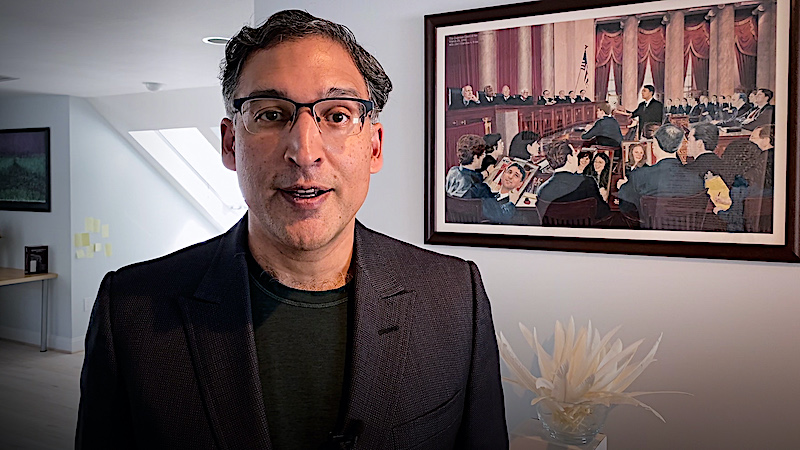
Do you like being right? Of course, everyone does. Are you successful at convincing others? That’s a tougher one. We may politely disagree, avoid, or scream bloody murder at each other, but whatever our conflict style, no one is born, and few are raised, knowing how to persuade.
:extract_focal()/https%3A%2F%2Fpocket-syndicated-images.s3.amazonaws.com%2Farticles%2F3987%2F1586460732_GettyImages-523463250.jpg)
Developing user habits is not the same as demanding compliance. But sometimes that’s the task at hand.

Some people have a knack for buying products that flop, supporting political candidates who lose and moving to neighborhoods that fail to thrive.
:extract_focal()/https%3A%2F%2Fs3.amazonaws.com%2Fpocket-syndicated-images%2Farticles%2F2790%2F1577720239_GettyImages-154925735.jpg)
Queens in many societies heavily influenced the policies and governing behavior of their kings.
:extract_focal()/https%3A%2F%2Fs3.amazonaws.com%2Fpocket-syndicated-images%2Farticles%2F654%2F1566583404_0.jpg)
Choose your words carefully and you can get someone to change their mind, or see you in a new light.

The holiday season is around the corner. For most of us, it means we need to get gifts for our loved ones—our family, our friends, maybe even for people we don’t know all that well, such as clients and coworkers. The holiday season is notoriously stressful. Surveys show that nearly 7 people out of 10 ... Read More

More than 2,000 years ago Aristotle outlined a formula on how to become a master of persuasion in his work Rhetoric . To successfully sell your next idea, try using these five rhetorical devices that he identified in your next speech or presentation: The first is egos or “character.” In order for your audience to trust you, start your talk by establishing your credibility. Then, make a logical appeal to reason, or “logos.” Use data, evidence, and facts to support your pitch. The third device, and perhaps the most important, is “pathos,” or emotion. People are moved to action by how a speaker makes them feel. Aristotle believed the best way to transfer emotion from one person to another is through storytelling. The more personal your content is the more your audience will feel connected to you and your idea.
:extract_focal()/https%3A%2F%2Fpocket-syndicated-images.s3.amazonaws.com%2Farticles%2F2571%2F1621987938_GettyImages-82567330.jpg)
New research is challenging long-held assumptions about how our eyes influence our stomachs.
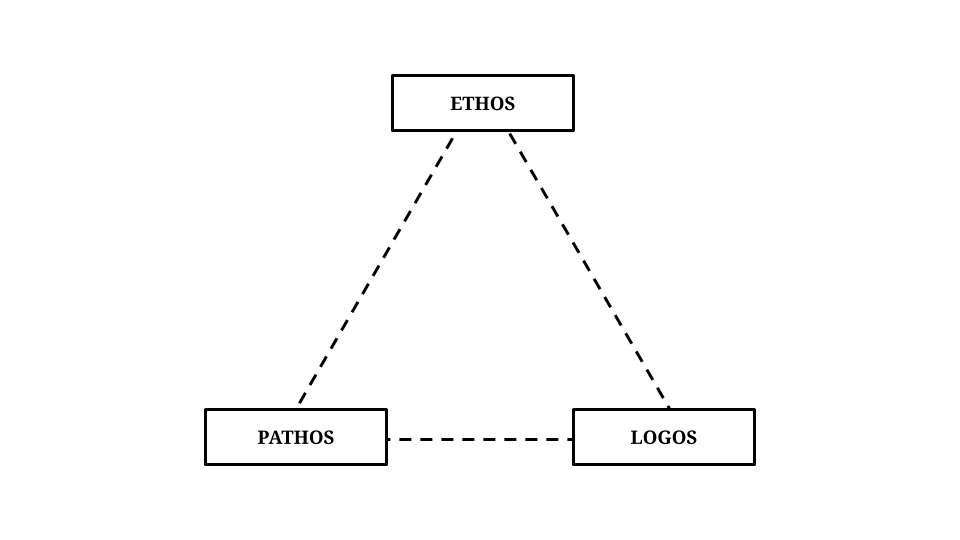
The three modes of persuasion — ethos, pathos, logos — are useful skills to master to persuade people and to understand how you’re being persuaded yourself.

Takedowns and clever quips are easy, but empathy and persuasion are better

Nonviolent communication (NVC) is a popular method of conflict resolution that privileges unbiased evidence and specificity.

Some bosses lack the political aptitude or key competencies that would let them help you get ahead. When you realize that your manager is out of the loop and your opportunities for influence within the company are limited, focus on getting you more access to communications. Identify individuals who can connect you with important information, and then find a low-key way to meet. As you develop relationships with senior leaders, review who is successful at selling ideas or meeting goals. Use this information to fine-tune your interactions and approaches. And, identify where your talents would most benefit the company so that you can become a key contributor to the organization. Don’t rely on anyone else — including a manager with higher standing — to open doors for you.

Why some people are constantly approached by friendly nearbys whereas others might as well be invisible

Remember that the essence of authority is that people willingly follow your lead. That is what the following strategies are designed to do.
:extract_focal()/https%3A%2F%2Fhbr.org%2Fresources%2Fimages%2Farticle_assets%2F2016%2F11%2Fnov16-22169984846.jpg)
A few tips on how to quickly and clearly relay information and avoid miscommunication.

Understanding user behavior is key to understanding how users interact with your product. Here are 15 steps to analyze & change their interactions to your benefit.
Express and receive communication empathically using the four-part Nonviolent Communication process developed by Marshall B. Rosenberg, Ph.D.

If you want someone to help, you’ll do better with a spec. It lists just four things: What is the problem to be solved? How are we going to solve it? How can we test that the thing we built m…

Open new routes to successful conversations with colleagues, friends, and family.

Supermarkets have always played tricks on your mind. Can they help you to eat better?